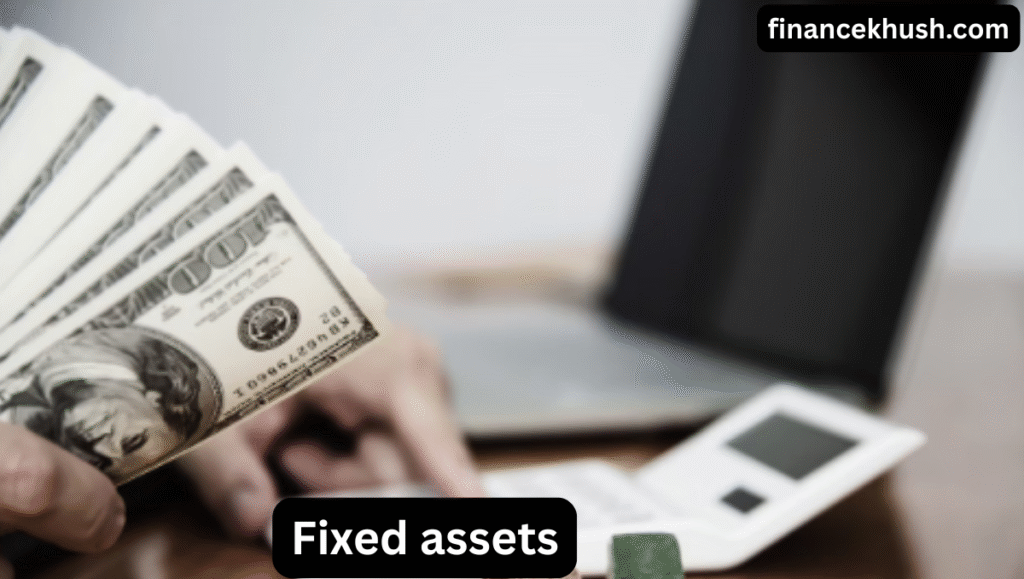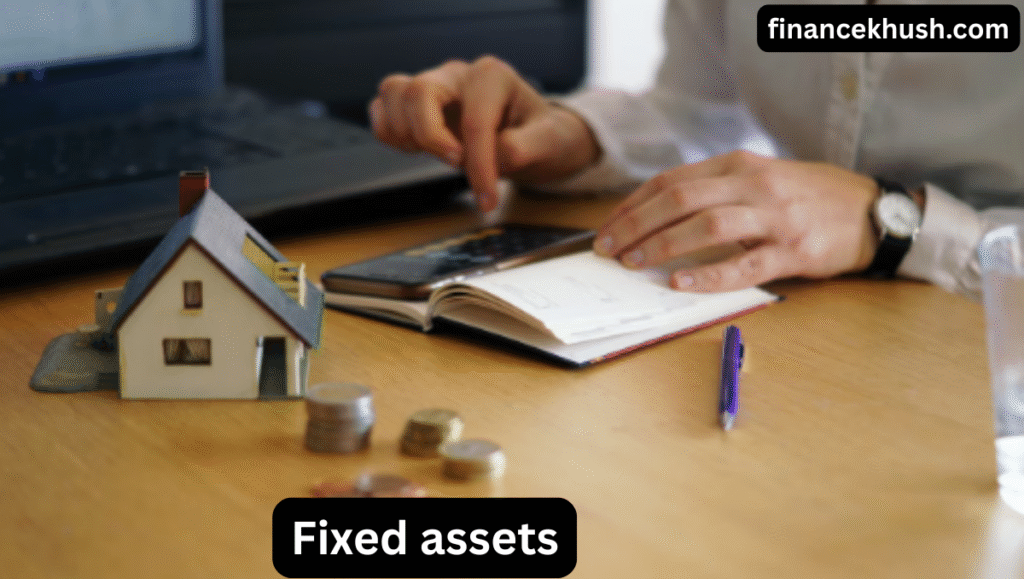Fixed assets are essential for business growth. Learn how they work, why they matter, and how to manage them for long-term success. business, there’s something just as important—assets. These are the things a company owns or controls that help it run and grow. Fixed assets, in particular, are essential for the long-term success of any business.
In this post, we’ll dive deep into what fixed assets are, how they work, and why they’re so important for your business. Don’t worry—no technical jargon here! We’re keeping it simple and easy to understand.
What Are Fixed Assets?
The Basics
Fixed assets, also known as tangible assets or long-term assets, are physical items a business owns and uses over a long period. They aren’t intended to be sold or used up within a year. Instead, they are assets that help the business operate day-to-day, often for many years.
Some common examples of fixed assets include:
- Buildings and properties: Offices, factories, or warehouses where your business operates.
- Machinery and equipment: Tools, manufacturing equipment, or computers that are used regularly to produce goods or services.
- Vehicles: Trucks, cars, or delivery vans that help the business run.
- Furniture and fixtures: Desks, chairs, or lighting that are used in the office.
- Land: Real estate that is owned by the business and used for operations.
These are just a few examples, but essentially, fixed assets are anything physical that you plan to keep and use in your business for more than a year.
Why Are Fixed Assets Important?
You might be wondering: “Why are fixed assets so crucial?” Well, they’re the backbone of any business that relies on physical goods, production, or long-term operations. Here are a few reasons why they matter:
1. Long-Term Value
Fixed assets are long-term investments. Unlike inventory (which is sold or used quickly), fixed assets help you grow your business over time. For example, purchasing a machine might cost a lot upfront, but it will help you produce goods more efficiently for many years.
2. Business Operations
Without fixed assets, your business wouldn’t function as smoothly. Imagine a bakery without an oven or a delivery company without vehicles. These assets are necessary for day-to-day operations. In essence, they enable your business to produce and deliver what you promise to your customers.
3. Financial Stability
Fixed assets can also provide financial security. Banks and investors may look at the value of your fixed assets when deciding whether to lend you money or invest in your company. In the event of financial trouble, these assets can often be used as collateral for loans.
4. Depreciation
While fixed assets are a valuable part of your business, they do lose value over time. This decrease in value is called depreciation. Understanding how depreciation works is key to managing your fixed assets and planning for future purchases or replacements.
How Are Fixed Assets Different from Other Assets?
Not all assets are created equal. Fixed assets are distinct from current assets like cash, inventory, or accounts receivable, which are expected to be used or converted into cash within a year.
Here’s a simple breakdown of the two:
- Fixed Assets: Long-term, physical items that provide value over several years (e.g., buildings, machinery, land).
- Current Assets: Short-term assets that are used or converted into cash within a year (e.g., inventory, accounts receivable, cash).
The main difference is the timeframe. Fixed assets are meant to stick around for the long haul, while current assets are typically turned over much faster.

How Do Businesses Account for Fixed Assets?
Understanding how to manage and keep track of your fixed assets is essential for proper financial reporting and planning. Businesses use something called an asset register to keep track of their fixed assets. This is essentially a list or database of all the fixed assets the business owns.
Here’s what an asset register typically includes:
- A description of the asset.
- The date it was acquired.
- The cost or value of the asset.
- The useful life (how long the asset will be used in the business).
- The current book value (original cost minus accumulated depreciation).
- Any maintenance or repair costs.
Keeping a detailed asset register helps businesses stay organized and ensures they can accurately report their assets when filing taxes or applying for loans.
Depreciation: The Value That Fades Over Time
As mentioned earlier, fixed assets don’t last forever. Over time, they lose value due to wear and tear, outdated technology, or simply because they age. This loss in value is called depreciation.
For example, a delivery van may cost $30,000 when you buy it, but after a few years of use, it may only be worth $15,000. Depreciation helps to account for this reduction in value over time.
There are different ways to calculate depreciation, but the most common methods are:
- Straight-Line Depreciation: The asset loses the same amount of value each year over its useful life. For example, if a machine costs $10,000 and has a useful life of 5 years, it would depreciate by $2,000 each year.
- Declining Balance Depreciation: The asset loses more value in the earlier years and less value as time goes on. This method is often used for assets that lose their value faster in the beginning (like computers or vehicles).
- Units of Production Depreciation: This method calculates depreciation based on how much the asset is used. So, if a piece of equipment is used heavily in the first year, it will depreciate more quickly than if it’s used lightly.
Depreciation is important because it affects your business’s tax filings. By accounting for depreciation, businesses can reduce their taxable income, which can save money.
How to Manage and Maintain Fixed-Assets
Owning fixed-assets isn’t just about purchasing them and using them until they’re worn out. Proper maintenance and regular checks are crucial to ensure they continue to provide value over time.
Here are a few tips for managing fixed-assets effectively:
1. Regular Maintenance
Many fixed-assets, such as machinery and vehicles, need regular maintenance to ensure they last as long as possible. Implementing a routine maintenance schedule can help prevent costly breakdowns and extend the life of your assets.
2. Track Your Assets
As mentioned earlier, keeping an up-to-date asset register is crucial. Make sure you regularly update it with information on new purchases, disposals, or any changes in value. This will help you stay organized and ensure you’re not missing anything when it comes time for financial reporting or tax filings.
3. Plan for Replacements
Fixed-assets don’t last forever, so it’s important to plan for their replacement. Keep an eye on the condition of your assets and think about how you’ll replace them when the time comes. This might mean setting aside funds for new purchases or gradually upgrading equipment as it becomes obsolete.
4. Insurance
Consider insuring your fixed-assets, especially those that are high-value, like buildings, machinery, or vehicles. Insurance can protect you from unexpected losses due to damage, theft, or other risks.

Conclusion
In a nutshell, fixed-assets are the tools, equipment, and properties your business needs to operate and grow over the long term. They provide lasting value, help you run daily operations, and even offer financial stability. Whether it’s a new piece of machinery, an office building, or a fleet of vehicles, these assets are essential for your business’s success.
related post
faq’s
1. What exactly are fixed-assets?
Fixed-assets are physical things that a business owns and uses for a long period (more than a year). These are items like buildings, machinery, vehicles, and office furniture that help the business operate. They aren’t meant to be sold or used up quickly.
2. How are fixed-assets different from other types of assets?
Fixed-assets are long-term assets, meaning they stay with the business for a long time (usually over a year). On the other hand, current assets (like cash or inventory) are short-term items that are used or sold within a year.
3. Why do I need to track my fixed-assets?
Tracking your fixed-assets helps you stay organized and ensures you know how much your business owns. It also helps with financial reporting and taxes, as you’ll need to account for things like depreciation (how they lose value over time).
4. What is depreciation, and why does it matter?
Depreciation is the reduction in value of a fixed asset over time due to wear and tear, aging, or obsolescence. It matters because it affects your business’s financial statements and taxes. Depreciation allows you to deduct the lost value from your income, which can reduce your tax bill.
5. How can I make sure my fixed-assets last longer?
To extend the life of your fixed-assets, regular maintenance is key. Things like cleaning, servicing, and checking for issues regularly can prevent breakdowns and keep your assets working efficiently. Also, keep an eye on how much they’re being used.
6. What happens when a fixed asset breaks down or is no longer useful?
When a fixed asset is no longer useful or breaks down beyond repair, it’s typically sold, disposed of, or written off the company’s books. It’s important to update your asset register and record the disposal for accurate financial reporting.

1 thought on “Fixed Assets 101: Everything You Need to Know Now”